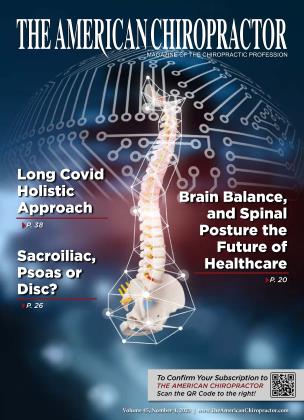PMR: Polymyalgia Rheumatica Mimicking Musculoskeletal Symptoms
IN BRIEF
Andrew M. Rodgers
DC
Many musculoskeletal symptoms, including vertebral and pelvic misalignments can be similar to the symptoms caused by polymyalgia rheumatica (PMR). This can occur unilaterally, but mostly bilateral shoulder pains mimicking rotator or biceps tendon tears with or without acromioclavicular impingement. Mostly bilateral pelvic hip girdle regional pains are part of PMR, although sometimes unilateral. Left neck pains and clavicular pain and stiffness are also classic signs of PMR.
PMR can be a serious autoimmune disease leading to Giant cell arteritis also known as GCA, causing vision blindness and possibly death. The differential diagnosis is a referral to a laboratory for blood work and back to the primary care physician for further diagnostics and immediate treatment. A treatment with prednisone verifies the diagnosis when the patient responds to even a low dose of corticosteroids.
Left neck pains and clavicular pain and stiffness are also classic signs of PMR.
It is important not to be tricked by this hidden autoimmune disease and delay proper treatment. Laboratory findings may include elevated erythrocyte sedimentation rate (ESR), creative protein reaction (CPR) and creatine phosphate (CP). The white blood cell count might be elevated, manifesting some type of inflammatory disease entity. In this case it’s classified as autoimmune disease. Bone density testing is also essential during the treatment with corticosteroids confirming there is no osteoporosis.
In conclusion, don’t be fooled by PMR. It would delay possible urgent medical attention and be extremely dangerous to the patient.
Dr. Andrew M. Rodgers has been a chiropractic physician for 48 years. He has four degrees: a Bachelor of Science in Premed, a master's degree in biology, a Doctor of Chiropractic (1974) from New York Chiropractic College, and a forensic degree from Texas Chiropractic College. He practices in Fort Lee, New Jersey, and he is the author of Danger Signs: Contraindications and Proper Applications of Spinal Manipulation. To contact him, email [email protected] or call 201-592-6200.
 View Full Issue
View Full Issue









